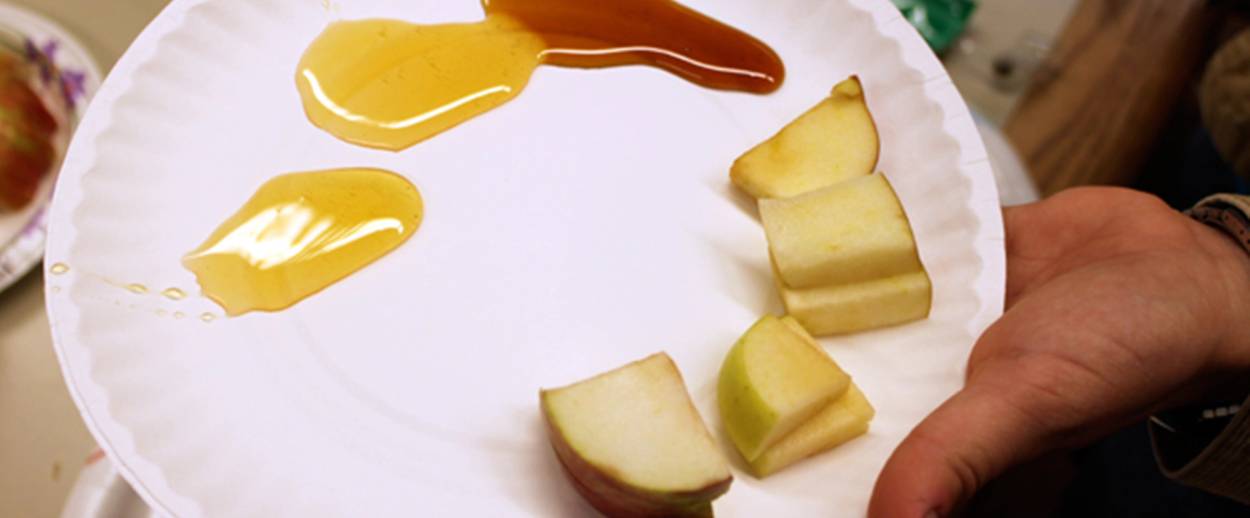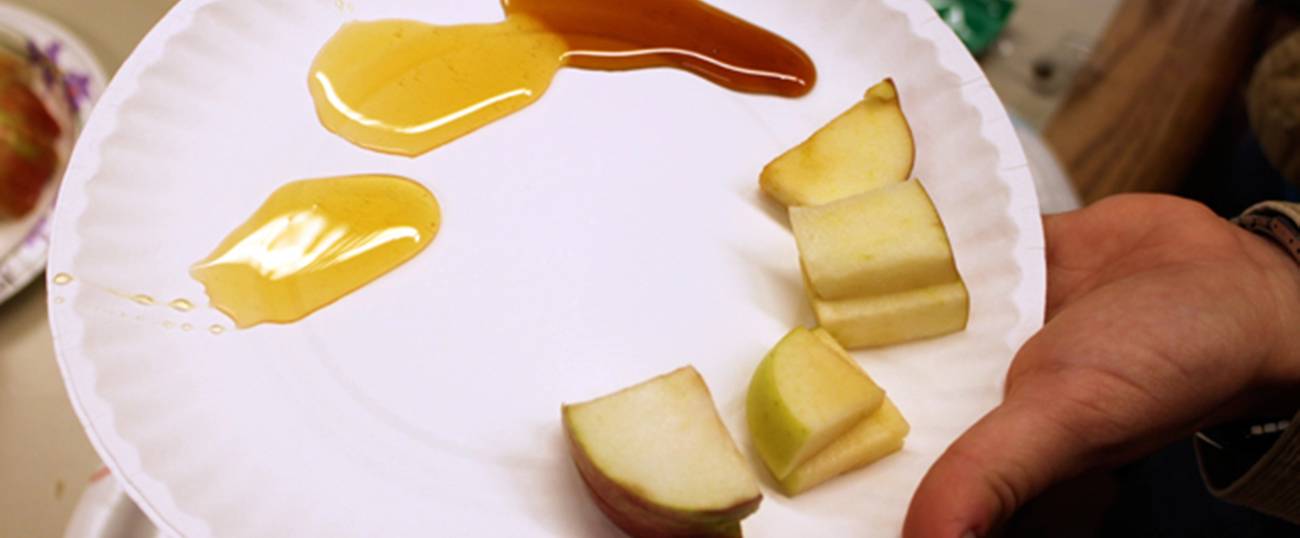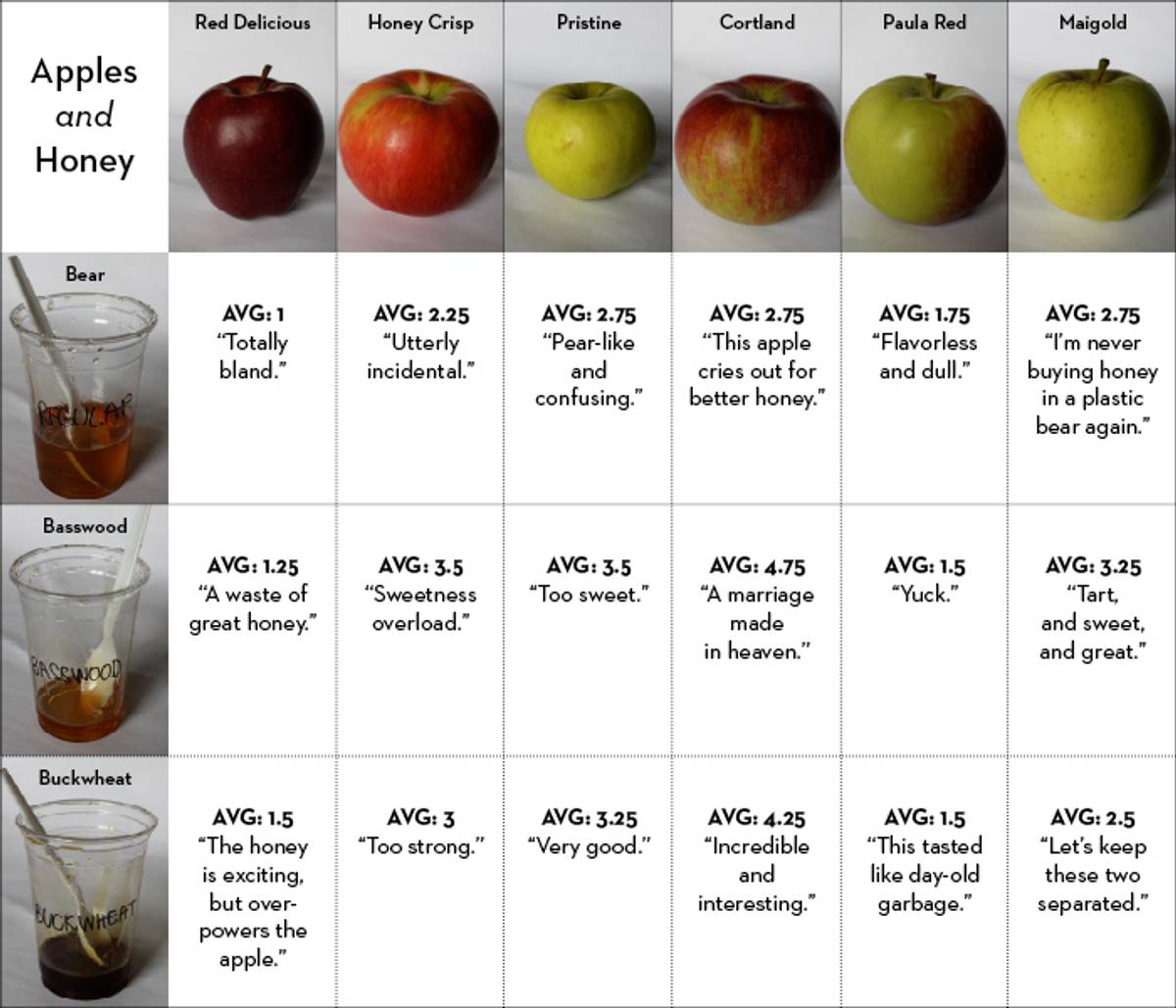Comparing Apples to Apples
Dipping apples in honey for Rosh Hashanah? Here’s a guide to picking the best ingredients for a sweet new year.




We here at Tablet are a picky bunch when it comes to food, so when we got to thinking about Rosh Hashanah, the tradition of dipping apples in honey to symbolize a sweet new year presented its problems. Which apples should we serve? And with which honey? There was only one way to answer these questions: a visit to Manhattan’s Union Square Farmers Market for a rigorous taste test.
The Contenders:
We purchased six apple varieties, all grown locally in New York State. They were:
Red Delicious: aka plain ol’ apple, this is by far the most popular apple in the United States. It’s so prevalent that in the 1980s, Red Delicious accounted for more than three-quarters of the apple harvest in Washington State, the nation’s largest apple producer. Just in case you haven’t seen them in a while, they’re thick-skinned with a deep red color and a mildly sweet flavor.
Honeycrisp: Cultivated in Minnesota and proudly serving as the state’s official fruit, the honeycrisp is one sturdy dude, retaining both its color and its flavor for relatively long periods of time. Born as a crossbreed of Macoun and Honeygold apples, it does both its parents proud, with its pleasing red-and-yellow mottled skin, its rich juice, and its excellent crispness.
Pristine: These apples were developed by scientists from three different American universities, and just like the stereotypical lab-dweller they, too, look pale and frail. The Pristines have a very thin, smooth, light-yellow skin, but their flavor is tart and wonderful.
Cortland: Named after the New York State county where it was born, the Cortland was created with pie-baking in mind. As such, it has a rich, white flesh that doesn’t brown quickly and a good balance of tart and sweet.
Paula Red: In some ways, this is the Cortland’s evil twin. Both apple varieties can trace their ancestry to the sturdy McIntosh, but whereas the Cortland is a survivor, the Paula Red is delicate. Its skin is red with yellow spots, and its flesh is deeply susceptible to air, heat, and other variables. Due to these sensitivities, its mild and almost berrylike flavor can easily be corrupted.
Maigold: A native of Switzerland, this pale yellow apple has a bold flavor, hitting the tongue with a sweet, almost honey-like burst and maturing into a citrusy flavor midpalate.
We tasted these apples with three varieties of honey:
Regular honey: You know, the kind that comes in a plastic bear and is available in every deli. It is very sweet and lacks any discernible depth of flavor.
Basswood honey: Originating from the Linden tree, this light-colored honey is delicate and floral with herbal notes and a hint of lavender.
Buckwheat honey: Not for the faint of heart. With its dark color, its viscosity, and a molasses-tinged flavor that recalls stout beer, this is a strong personality.
The Methodology:
Tablet’s staffers tasted each variety of apple with each variety of honey, a total of 18 different combinations, marking each combination on a scale of 1-5 and adding the occasional tasting note.
The Results:

Overall, then, the Cortland emerged—unanimously!—as our apple of choice. While some of us liked the rich and complex flavors of the buckwheat, the majority agreed that it was the basswood’s floral notes that provided the perfect complement to the Cortland’s perfectly balanced flavor. The winner, then, is the Cortland with the Basswood honey.
Happy dipping!
This article was originally published on Sept. 11, 2009.
From the editors of Tablet Magazine.